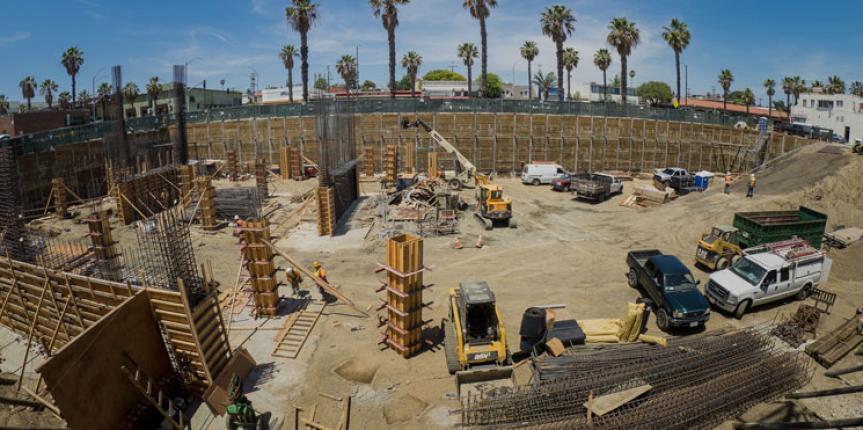
Concrete blocks are one of the main materials used during construction of any building’s wall. It is also called a Concrete Masonry Unit (CMU). Most of the concrete blocks have hollow cavities, with smooth sites and hardened material before they are bought to the construction site.
The first hollow concrete block was designed in 1890 in the United States by Harmon S. Palmer. As the years passed, the stronger concrete block was made.
The earlier cement blocks were cast and made by hand. But today, there are highly automated processes to produce concrete hollow blocks that can produce 2000 blocks per hour. Do you also want to know how to make concrete blocks manually or process of cement block manufacturing? If yes, here are few steps that you need to follow.
Steps required to made Concrete Hollow Blocks
Here are a few steps on how are cinder blocks made:
1. Raw materials
Raw materials used for concrete blocks manufacturing are- powdered portland cement, water, sand, and gravels. The concrete mixture for the blocks has a higher percentage of sand and a lower percentage of gravel and water.
Light-weighted blocks are made by replacing sand and gravel with expanded clay, shale or slate. Basic concrete block material also include chemicals like admixtures, which helps in increasing strength. For the designs, the glaze is coated.
2. Concrete Block Manufacturing Process
The mixing process includes transferring the sand and gravels to storage bins, as per the proportions required. Then, they are mechanically transferred to a weigh more batch, which measures the proper amount of each material.
The materials are then transferred to a stationary mixer where they are blended. Two types of mixers commonly used are- Pan Mixer and the Horizontal Mixer.
After the blending is completed, the required amount of water is added to the mixer according to the climate conditions and the water temperature. During this time, admixtures and coloring pigments are added. And mixing is continued for the other six to eight minutes.
3. Molding Process
In Molding Process, the thoroughly mixed materials it is dumped into an inclined bucket and is transported to elevator hopper. The mixing cycle starts again for the next load. After this hoper, the mixture’s flow rate is measured while conveyed to another hopper.
After the measurements, they are transferred to interlocking concrete block molds, which have several mold liners in the outer mold box. They help to determine the outer shape of the block and inner share of the hollow cinder blocks cavity. When molds are full, blocks undergo compaction, by supplementing air or hydraulic pressure cylinders.
The blocks are then pushed down onto a flat steel pallet and blocks pass under a rotating brush which removes the loose material.
4. Curing Process
The next step is the Curing process, where the pallets are conveyed to the automated stacker and later to a curing rack.
The curing kiln is an enclosed room where blocks are kept to harden them according to the room temperature required. There are two types of the kiln: low-pressure steam kiln (not more than 60 degrees F, per hour) and high-pressure (300-375 degrees F)
5. Cubing Process
The last stage is Cubing, where the kiln is rolled out, and pallets are removed. At this stage, the pallets are emptied, and a new set of blocks are fed back.
During the curing phase, few blocks are joined in the curing process and are later struck off by heavy blades. After the cubing stage, these cubes are carried outside with a forklift and placed in storage.
Factors Affecting the Workability of Concrete Block
The workability and strength of concrete are inversely proportional. The workability of concrete is measured in terms of the ease in which it can be mixed, transportation to the construction site, or placed in forms and compacted.
1. Cement content of concrete
2. The water content of concrete
3. Mix proportion of concrete
4. Use of supplementary cementations materials
5. Grading of aggregates
6. Size of aggregates
7. Surface textures of aggregates
8. Use of admixtures in concrete
